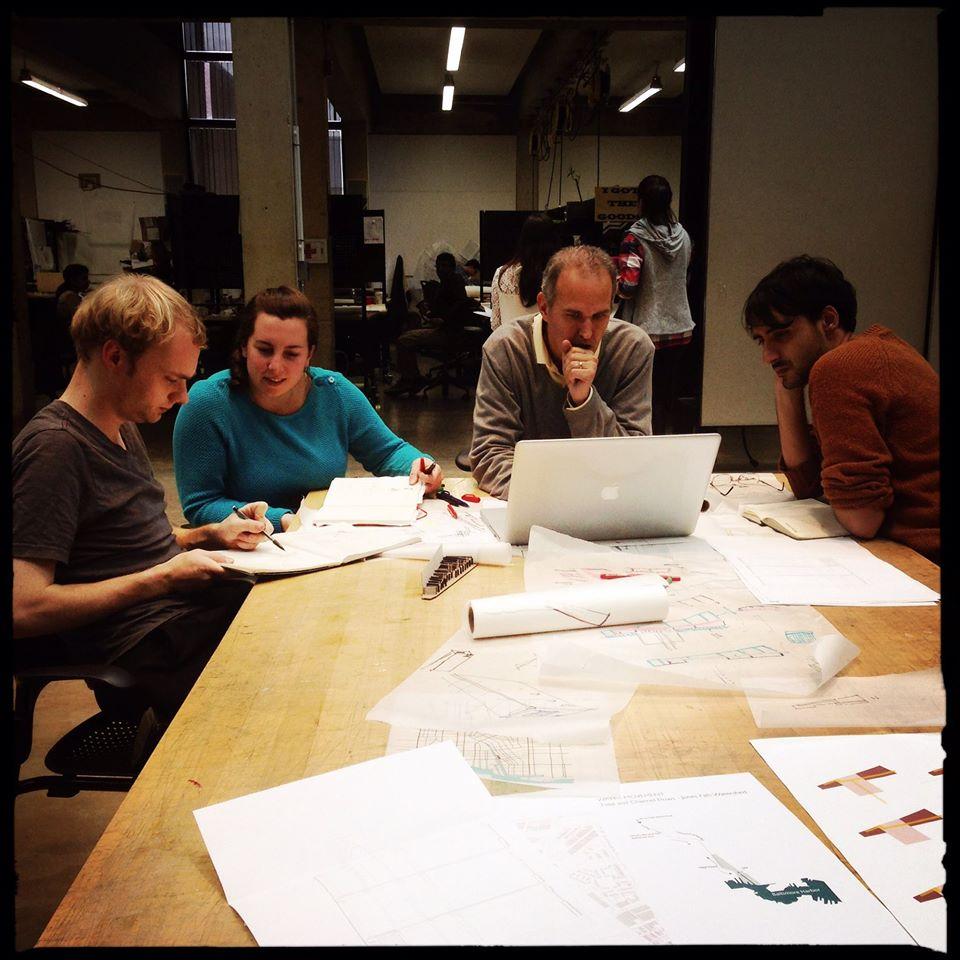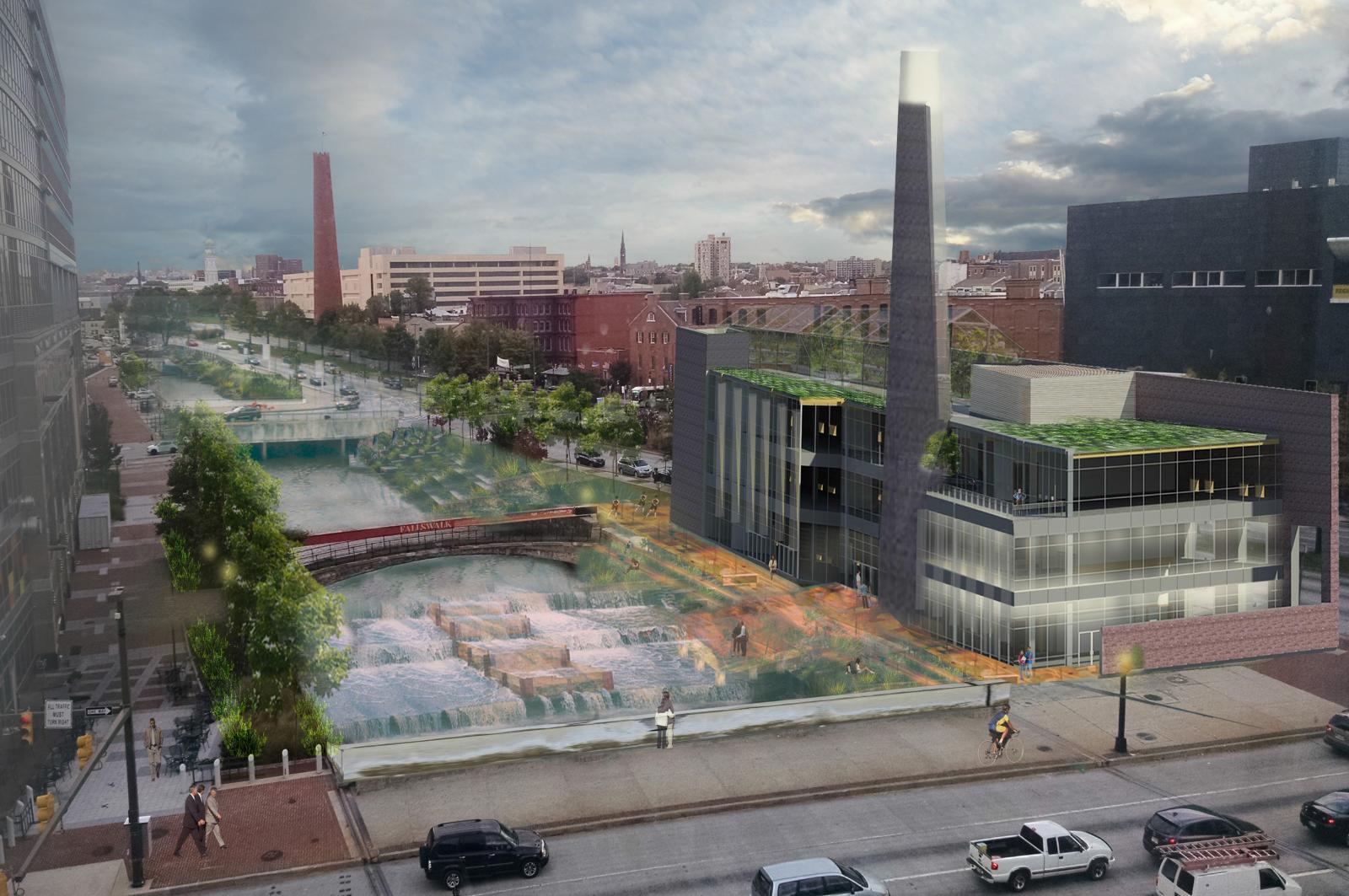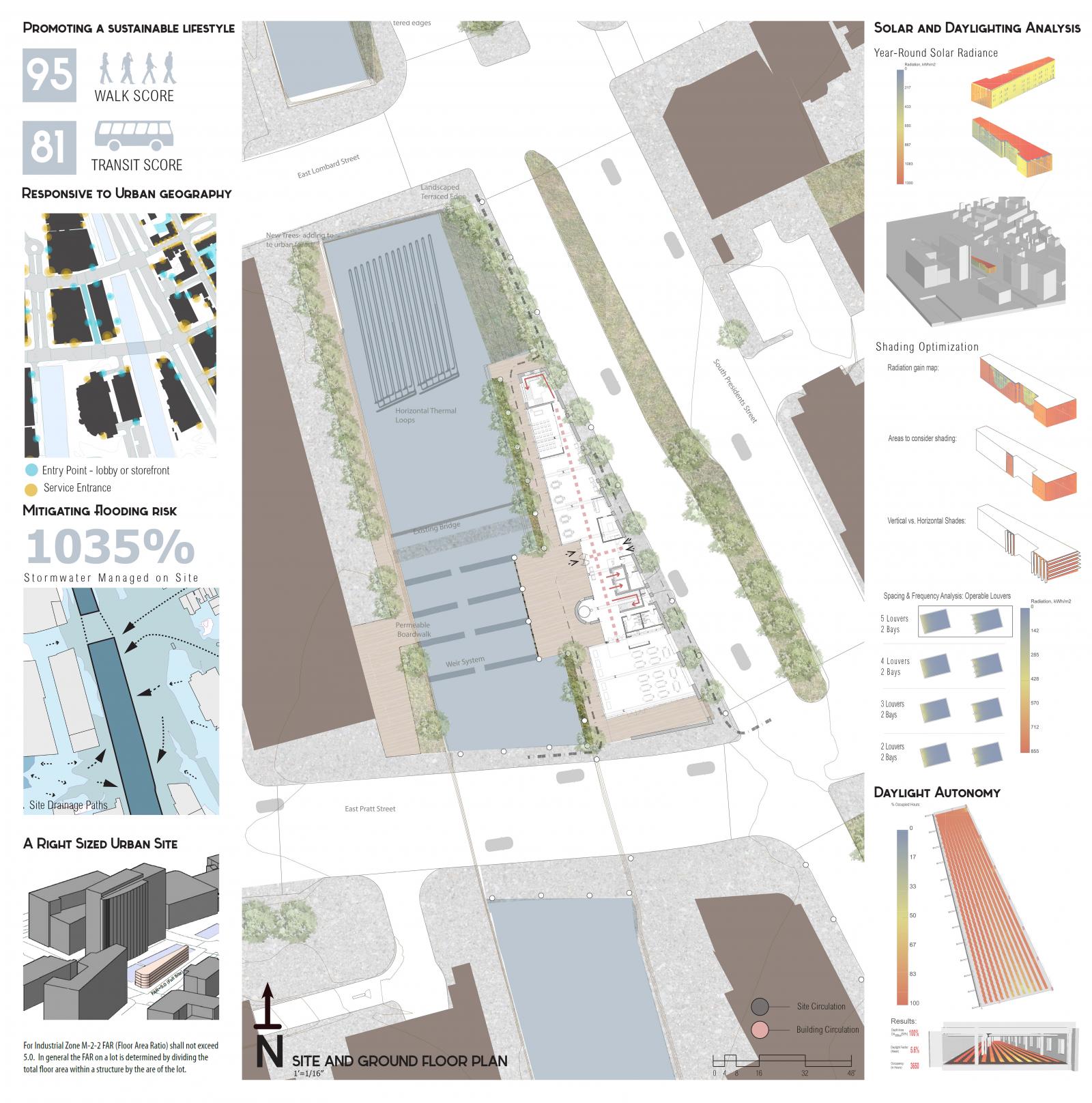A design project conceived by three graduate students from the University of Maryland’s (UMD) Architecture Program has placed in the 2015 AIA COTE Top Ten for Students Design Competition. Graduate students Valerie Sherry, Adam Chamy and Michael Sisson’s winning design, entitled, “Regenerative Urban Ecology: Fostering a Place Based Workspace,” transforms an urban site in Baltimore into a sustainable, energy-building space that connects the city’s fabric while addressing its environmental condition.
Created by the American Institute of Architects Committee on the Environment (AIA COTE), in partnership with the Association of Collegiate Schools of Architecture (ACSA), the AIA COTE Top 10 for Students challenges architecture students to conceive a project that integrates thoughtful design, natural systems and technology solutions that protect and enhance the environment. The ten winning submissions, selected by a jury of design professionals, were chosen based on their ability to address 10 specific sustainability measures—from materials to land use—while offering innovative, regenerative strategies.
"We were thrilled to get word of the award and share this excitement with our team,” said team member Valerie Sherry. “When we submitted our project we were not sure what to expect, given that it would be reviewed by professionals. We are certainly grateful that the competition gave us a chance to test what we had learned."
The team’s project was the result of work completed in the graduate level ARCH 600 Integrated Design Studio. Under the guidance of Professor of the Practice Peter Noonan, Assistant Professor Powell Draper and Associate Professor Carl Bovill, the students concentrated on a narrow brownfield site in the heart of downtown Baltimore. The students’ biggest challenge was balancing the buildings’ programming—a community space that doubles as an environmental economic research center—with the neighborhood’s architectural fabric, sustainable building methods and green technology, a complex task that required a carefully considered methodology.
“Our biggest challenge was forming a design approach that was both highly sustainable but not superficial,” said Adam Chamy. “We strove for a human architecture that went beyond the program requirements. You can add any number of sustainable systems—from solar panels to geothermal—but, do they integrate seamlessly into the buildings operations, user experience and visual impact of the place? I think that once we knew our narrative and had specifically formulated our design approach, the complex requirements were, in a sense, intuitive.
A flexible foundation was crucial to achieving the team’s goals in such a constrained space. The students consulted with a variety of experts, architects and engineers during the ARCH 600 studio and ran the design through a series of program models—from salsa classes to farmers markets—to insure that the space worked as it was intended. Also important was local sourcing with sustainability in mind; a variety of materials, from reclaimed beams to bricks, marry with state of the art green technologies like a vegetative roof, photovoltaic panels and a geothermal loop system. These features, in addition to a small wetland and a series of weir systems, actively clean the city’s watershed, restoring the ecological health and integrity of the adjacent Jones Fall Canal.
Equally critical to the team’s success was the diverse knowledge each student brought to the table, which according to Michael Sisson, helped strength their entry.
“In my opinion it was a successful project because of our diversity in knowledge and interests,” said Michael. “It allowed us to holistically design a complex sustainable building and having a diverse architecture and sustainability toolkit allowed us to collaborate quickly and effectively.”
“There is no doubt that sustainable design drives the future of our profession,” said David Cronrath, Dean of the School of Architecture, Planning and Preservation. “We are thrilled to have one of our student teams honored for their efforts in innovative, environmentally-minded design.”
The team design will be featured at the American Institute of Architects Annual Convention in Atlanta (May 2015) and the 104th ACSA Annual Meeting in Seattle (March 2016). The other winning entries hailed from MIT, Iowa State, UPENN, University of Oregon and the University of Tennessee / Knoxville. This is the inaugural year for the completion. To see the team’s winning design, visit the AIA COTE website, here.



